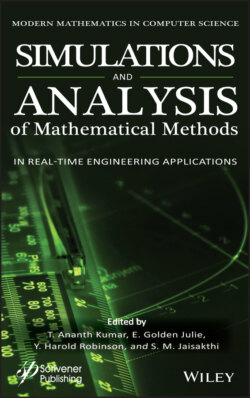Читать книгу Simulation and Analysis of Mathematical Methods in Real-Time Engineering Applications - Группа авторов - Страница 32
2.1.1 Cloud-Based IoT and Need of Edge Computing
ОглавлениеThe Internet of Things (IoT) plays a vital role in human daily life by making all the devices connected through the internet, and it works ingeniously. Day by day, the IoT plays a crucial role in all the domains [4]. For example, IoT provides excellent service to medical applications like tracking patient status, heart rate, blood pressure, and sugar level can be monitored, and if a patient goes into a critical or unstable condition, the doctor can provide solutions through the report generated by the IoT application [6]. The IoT data can also be used to study different patients’ lifestyles and activities to prevent them from going into a critical situation. Therefore, the IoT has developed opportunities to provide brilliant solutions with many predictions and intelligence.
IoT devices are correctly functioning because of several technologies like cloud computing that give many advantages to IoT devices, including storage infrastructure, processing the real-time data in IoT devices, and high-performance computing. It leads to cloud computing as a revolutionary part of IoT devices, which provides smart and self-predicted data [6]. Due to IoT devices’ evolution, cloud providers take an immense advantage to provide the communication or transfer of data between the IoT devices. This results in the Cloud of Things, which connects both cloud computing and IoT devices.
Large data centers are built by various cloud providers across the world, which have the capacity to serve users from around the world. Hence there exists a separation from the cloud centers to the users, which creates delays, latencies. Another disadvantage of cloud services due to distance of separation is location access can never be accurate. Information about users and their mobility is also another disadvantage of cloud computing. In augmented reality applications like cloud gaming as discussed for real-time tracking system applications like vehicular systems, a unique computing method is required, which is achieved by edge computing [7].
Edge computing enables the deployment of cloud computing capabilities at the edge of the network. The infrastructure providers own the data centers and implement multi-tenant virtualization. The third-party customers, end users, and infrastructure providers can access these edge data centers. Edge computing services are automated, thus refraining from disconnecting from the cloud. This leads to the possibility of creating a hierarchical multi-tiered architecture. Edge computing leads to an open ecosystem where one trusted domain cooperates with other trusted domains and a multitude of customers are served. Though there are multiple edge paradigms with few differences, there are also similarities [8]. Edge Architecture’s outline is provided below for understanding before dealing with the challenges and the solution using mathematical models (Markov Chain Model and game theory), deep learning and evolutionary algorithm.
